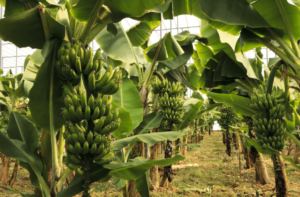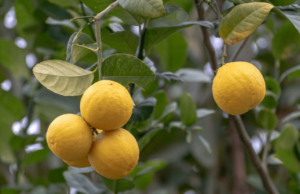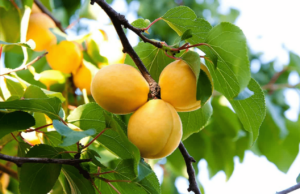Succulent Care Guide: How to Keep Your Plants Thriving
Succulents are a diverse group of plants that have adapted to survive in arid and semi-arid environments by storing water in their leaves, stems, or roots. This unique adaptation allows them to thrive in conditions that would be challenging for other types of plants. Succulents come in a wide variety of shapes, sizes, and colors, making them a popular choice for both indoor and outdoor gardens.
Succulents are known for their low maintenance requirements, making them an ideal choice for busy gardeners or those with limited gardening experience. They are also highly adaptable and can thrive in a range of environments, from hot, sunny climates to cooler, shadier conditions. Understanding the specific needs of the succulents you choose to grow is essential for their long-term health and vitality.
When it comes to caring for succulents, it’s important to remember that they have evolved to thrive in dry conditions. Overwatering is one of the most common mistakes made by succulent growers, as it can lead to root rot and other issues. Providing well-draining soil, adequate sunlight, and minimal water is key to keeping your succulents healthy and happy.
Key Takeaways
- Succulents are water-storing plants that thrive in arid environments and have fleshy leaves or stems.
- Use well-draining soil and pots with drainage holes to prevent waterlogged roots and rot in your succulents.
- Water your succulents sparingly, allowing the soil to dry out completely between waterings to prevent root rot.
- Place your succulents in a sunny location, providing at least 6 hours of sunlight per day for optimal growth.
- Fertilize your succulents sparingly during the growing season with a balanced fertilizer to promote healthy growth.
Choosing the Right Soil and Pot for Your Succulents
The right soil is crucial for the health and well-being of your succulents. Succulents require well-draining soil that allows excess water to escape quickly, preventing the roots from becoming waterlogged. A good succulent soil mix should contain a combination of materials such as sand, perlite, and pumice to create a light, airy texture that promotes drainage.
When choosing a pot for your succulents, it’s important to consider both function and aesthetics. Terra cotta pots are a popular choice for succulent growers because they are porous and allow excess moisture to evaporate from the soil. However, any container with drainage holes will work well for succulents, as long as it allows water to escape freely.
It’s also important to consider the size of the pot in relation to the size of the plant. Succulents generally prefer to be slightly root-bound, so choosing a pot that is just slightly larger than the plant’s root ball is ideal. This will help prevent overwatering and promote healthy root growth.
Watering Your Succulents: The Dos and Don’ts
Watering is one of the most critical aspects of succulent care, and it’s essential to get it right to ensure the health and longevity of your plants. The key to watering succulents is to allow the soil to dry out completely between waterings. Overwatering is one of the most common mistakes made by succulent growers and can lead to root rot and other issues.
When watering your succulents, it’s important to water deeply and thoroughly, allowing the water to soak through the soil and reach the roots. However, it’s equally important to allow excess water to drain away freely, as standing water can lead to root rot and other problems. Watering from the bottom is a good technique for ensuring that the roots receive adequate moisture without saturating the soil.
In general, succulents require less water during the winter months when they are in a period of dormancy. It’s important to adjust your watering schedule accordingly, allowing the soil to dry out even more between waterings. Pay attention to the specific needs of each type of succulent you are growing, as some may require more frequent watering than others.
Providing Adequate Sunlight for Your Succulents
| Succulent Type | Light Requirement |
|---|---|
| Aloe Vera | Direct sunlight for 6 hours per day |
| Echeveria | Partial sunlight for 4-6 hours per day |
| Sedum | Full sunlight for 6-8 hours per day |
| Haworthia | Indirect sunlight for 4-6 hours per day |
Succulents are sun-loving plants that require plenty of sunlight to thrive. In general, most succulents prefer bright, indirect light, although some varieties can tolerate direct sunlight for part of the day. When growing succulents indoors, it’s important to place them in a location where they will receive plenty of natural light, such as near a south-facing window.
If you are growing succulents outdoors, it’s important to consider the specific light requirements of each type of plant. Some succulents prefer full sun, while others may require some protection from intense afternoon sunlight. It’s important to observe your plants regularly and adjust their location as needed to ensure they are receiving the right amount of light.
Inadequate sunlight can lead to a variety of issues in succulents, including stretching or etiolation, where the plants become leggy and weak as they reach for light. Insufficient light can also cause succulents to lose their vibrant colors and become pale or faded. Providing adequate sunlight is essential for promoting healthy growth and vibrant foliage in your succulents.
Fertilizing Your Succulents: Best Practices
Fertilizing is an important aspect of succulent care, but it’s essential to approach it with caution. Succulents have relatively low nutrient requirements compared to other types of plants, so it’s important not to overdo it when it comes to fertilizing. Using a balanced, water-soluble fertilizer at half strength is generally recommended for most types of succulents.
It’s important to fertilize your succulents during their active growing season, which is typically in the spring and summer months. Avoid fertilizing during the winter when your plants are in a period of dormancy, as they will not be actively growing and will not require additional nutrients.
When fertilizing your succulents, it’s important to apply the fertilizer to damp soil to prevent burning the roots. It’s also important to avoid getting fertilizer on the leaves or stems of your plants, as this can cause damage. Following these best practices will help ensure that your succulents receive the nutrients they need without risking their health.
Preventing and Managing Common Succulent Pests and Diseases

Succulents are generally low-maintenance plants, but they can still be susceptible to pests and diseases if not properly cared for. Common pests that can affect succulents include mealybugs, aphids, spider mites, and scale insects. These pests can cause damage to the leaves and stems of your plants if left untreated.
To prevent pest infestations, it’s important to inspect your succulents regularly for signs of pests and take action at the first sign of trouble. In some cases, simply rinsing your plants with a strong stream of water can help dislodge pests and prevent infestations from taking hold. For more severe infestations, you may need to use an insecticidal soap or neem oil to treat your plants.
In addition to pests, succulents can also be susceptible to fungal diseases such as root rot and powdery mildew. These diseases are often caused by overwatering or poor air circulation around the plants. To prevent fungal diseases, it’s important to provide adequate airflow around your succulents and avoid overwatering them.
Propagating Succulents: How to Expand Your Collection
One of the most rewarding aspects of growing succulents is the ability to propagate them and expand your collection without having to purchase new plants. There are several methods of propagating succulents, including leaf cuttings, stem cuttings, division, and offsets. Each method has its own unique requirements and best practices.
Leaf cuttings are one of the most common methods of propagating succulents and involve removing a healthy leaf from a mature plant and allowing it to callus over before planting it in well-draining soil. Stem cuttings involve taking a section of stem from a mature plant and allowing it to callus over before planting it in soil. Division involves separating offsets or pups from the parent plant and planting them separately.
Regardless of the method you choose, it’s important to provide the right conditions for your propagated succulents to ensure successful growth. This includes providing well-draining soil, adequate sunlight, and minimal water until the new plants have established roots. With patience and care, you can expand your succulent collection and share your love of these unique plants with friends and family.
FAQs
What are succulents?
Succulents are a type of plant that store water in their leaves, stems, or roots, allowing them to survive in arid environments.
How often should I water my succulents?
Succulents should be watered sparingly, allowing the soil to dry out completely between waterings. The frequency of watering will depend on factors such as the type of succulent, the climate, and the time of year.
What type of soil is best for succulents?
Succulents require well-draining soil to prevent root rot. A mix of potting soil, sand, and perlite is often recommended for optimal drainage.
How much sunlight do succulents need?
Most succulents thrive in bright, indirect sunlight. However, some varieties may require more or less sunlight, so it’s important to research the specific needs of your succulent.
Do succulents need fertilizer?
Succulents can benefit from a diluted, balanced fertilizer during their growing season, typically in the spring and summer. However, they can survive without fertilizer if they are planted in nutrient-rich soil.
How do I propagate succulents?
Succulents can be propagated through methods such as leaf cuttings, stem cuttings, or division. Each method requires specific care and attention to ensure successful propagation.
What are common pests and diseases that affect succulents?
Common pests that can affect succulents include mealybugs, aphids, and spider mites. Diseases such as root rot and powdery mildew can also pose a threat to succulents if they are overwatered or exposed to high humidity.



